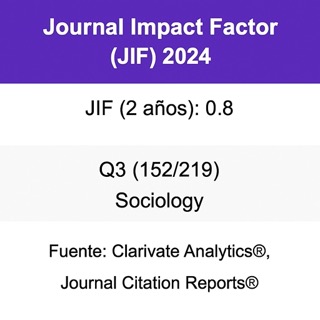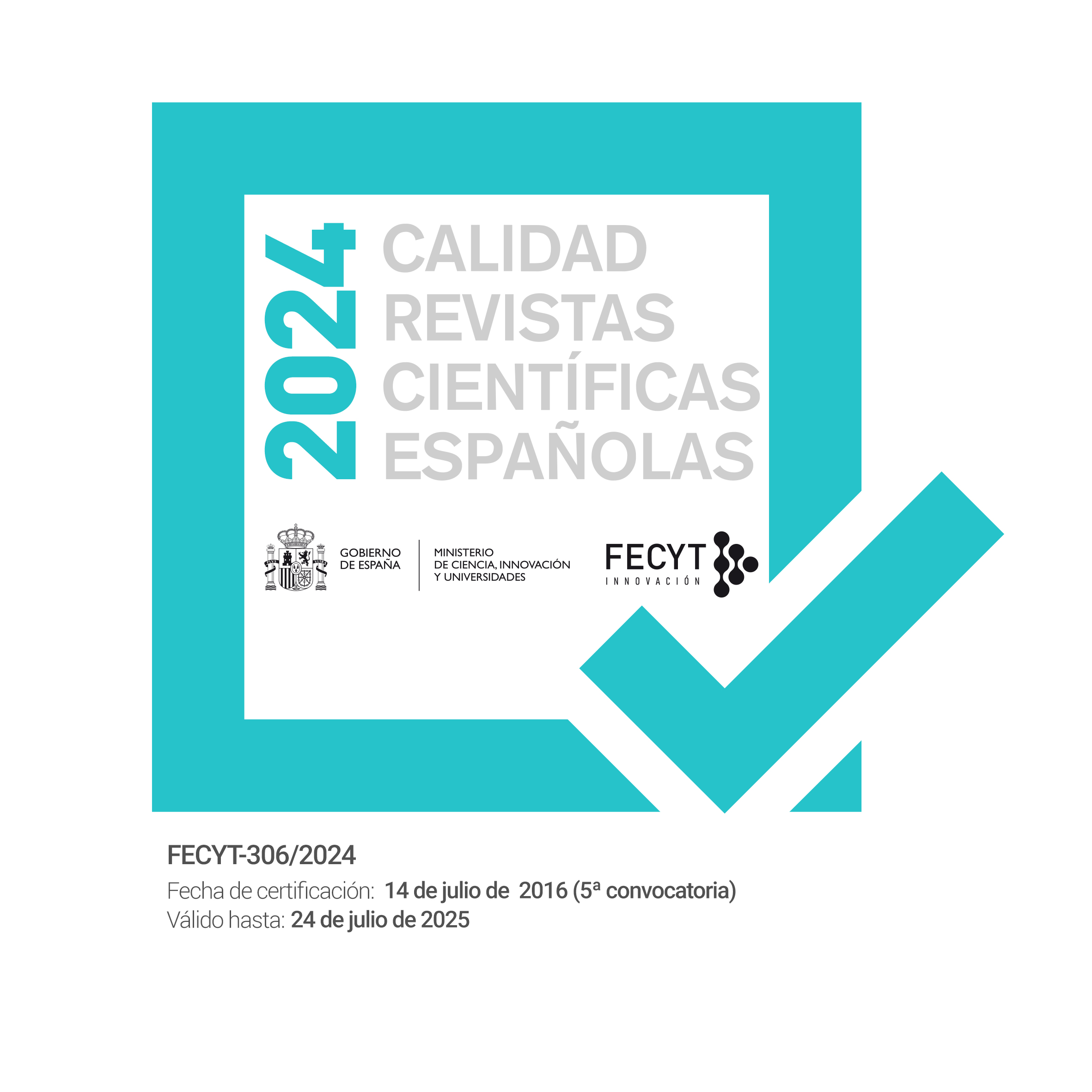¿Desventaja académica de los hijos de inmigrantes? La excepción canaria en el contexto español
DOI:
https://doi.org/10.22325/fes/res.2018.5Palabras clave:
Rendimiento académico, inmigrantes, estatus socioeconómico, capital cultural, efectos de las escuelas.Resumen
En España las evidencias muestran un inferior rendimiento académico por parte de los hijos de inmigrantes. Con datos de PISA, este trabajo analiza dicho rendimiento en Canarias, caso obviado por la literatura y única comunidad en la que este alumnado no presenta desventaja académica. Se describe el diferencial académico con respecto a los estudiantes nativos poniéndolo en relación a lo hallado en el resto de España, se analiza dicho diferencial en función del estatus migratorio, y se examina mediante aná- lisis multinivel la incidencia sobre el mismo de factores individuales y contextuales relevantes según la literatura. Se demuestra que la singularidad del caso canario se debe principalmente al peor rendimiento de sus estudiantes nativos con respecto a los de otras regiones. El mayor nivel educativo medio de los padres de estudiantes inmigrantes se halla como el principal factor que impulsa su rendimiento frente al de los nativos en esta región.Citas
Álvarez de Sotomayor, A. (2011). El rendimiento académico de los alumnos inmigrantes en España: un estudio de caso. Tesis doctoral (en línea). http://0-hera.ugr.es.adrastea.ugr.es/tesisu-gr/20152784.pdf, acceso 1 de julio de 2016.
Álvarez-Sotomayor, A., Martínez-Cousinou, G., Gutiérrez Rubio, D. (2015). Cuando la segunda generación no se queda atrás: evidencias sobre el rendimiento académico de los hijos de inmigrantes en el caso andaluz. Estudios sobre educación, 28, 51-78.
Amato, P. R. (2001). Children of Divorce in the 1990s: An Update of the Amato and Keith (1991) Meta-Analysis. Journal of Family Psychology, 15, 355-370.
Aparicio, R., Tornos, A. (2006). Hijos de inmigrantes que se hacen adultos: marroquíes, dominicanos, peruanos. Madrid: Ministerio de Trabajo.
Arango, J. (2010). Después del gran Boom: La in- migración en la bisagra del cambio. La Inmigración En Tiempos de Crisis, Anuario de La Inmigración En España, 52-73.
Bourdieu, P., Passeron, J. C. (2014). La reproducción. México DF: Fontamara.
Bukodi, E., Goldthorpe, J. H. (2013). Decomposing ‘social origins’: The effects of parents’ class, status, and education on the educational attainment of their children. European Sociological Review, 29 (5), 1024-1039.
Calero, J., Choi, A., Waisgrais, S. (2009). Determi- nantes del rendimiento educativo del alumnado de origen nacional e inmigrante en PISA-2006. Cuadernos económicos de ICE, 78, 281-310.
Carabaña, J. (2008). Las diferencias entre regiones y países en las pruebas PISA. Documento 2 (en línea). http://www.colegiodeemeritos.es/DocumentosDelColegio_Documen-to2_InformePisa/seccion=32&idioma=es_ES&id=2008052910570001&activo=1.do, acceso 1 de Febrero de 2016.
Carabaña, J. (2016). El Informe Coleman, 50 años después. Revista de la Asociación de Sociología de la Educación (RASE), 9 (1), 9-21.
Cebolla-Boado, H. (2008). ¿Están los estudiantes de origen inmigrante en desventaja?: diferencias internacionales e interregionales en España. Panorama social, 8, 97-111.
Cebolla-Boado, H. (2009). Inmigración y educación: del shock demográfico al debate sobre el rendimiento. En H. Cebolla Boado y M. J. Larios Paterna (eds.), Inmigración y Educación (pp. 9-55). Madrid: Centro de Estudios Políticos y Constitucionales.
Cebolla-Boado, H. (2013). Introducción al análisis multinivel. Madrid: CIS.
Cebolla-Boado, H., González, A. (2008). La inmigración en España (2001-2007). De la gestión de los flujos a la integración de los inmigrantes. Madrid: Centro de Estudios Políticos y Constitucionales.
Coleman, J. S. (2001). Capital social y creación de capital humano. Zona abierta, 94/95, 47-81.
Crul, M., Schneider, J., Lelie, F. (eds.). (2012). The European second generation compared: Does the integration context matter? Amsterdam: Amsterdam University Press.
Defensor Del Pueblo (2003). Escolarización del alum- nado de origen inmigrante en España: análisis descriptivo y estudio empírico (en línea). http://www.defensordelpueblo.es/es/Documentacion/Publicaciones/monografico/contenido_1261584551261.html, acceso 20 de enero de 2016.
Fullana, J., Besalú, X., Vilá, M. (2003). Alumnes d’origen africà a l’escola. Girona: CCG Edicions.
Glazer, N. (1987). In search of excellence and equity in our nation’s schools. Harvard Educational Review, 57 (2), 196-199.
Gottainer, G., Biblarz, T. (2000). Family Structure and Children’s Success: A Comparison of Wi- dowed and Divorced Single-Mother Families. Journal of Marriage y the Family, 62, 533-49.
Hattie, J. (2009). Visible learning: A synthesis of meta-analyses in education. London: Routledge.
Heath, A., Rothon, C., Kilpi, E. (2008). The Second Generation in Western Europe: Education, Unemployment, and Occupational Attainment. Annual Review of Sociology, 34, 211-235.
Kao, G., Thompson, J. S. (2003). Racial and Ethnic Stratification in Educational Achievement and Attainment. Annual Review of Sociology, 29, 417-442.
Kao, G., Tienda, M. (2005). Optimism and achieve- ment: The educational performance of immigrant youth. En M. Suárez-Orozco, C. Suárez- Orozco, D. Baolian Qin (eds.), The new immigration: An interdisciplinary reader (pp. 331-343). New York: Routledge.
Kuehn, R. (2009). No sólo turistas y jubilados. Acerca de la (invisible) presencia de inmigrantes de Europa occidental en España. En D. Reher, M. Requena (eds.), Las múltiples caras de la inmigración en España (pp. 21-75). Madrid: Alianza.
LeTendre, G. K., Hofer, B. K., Shimizu, H. (2003). What Is Tracking? Cultural Expectations in the United States, Germany, and Japan. American
Educational Research Journal, 40 (1), 43-89.
Levels, M., Dronkers, J., Kraaykamp, G. (2008). Immigrant Children’s Educational Achievement in Western Countries: Origin, Destination, and Community Effects on Mathematical Perform- ance. American Sociological Review, 73 (Octo- ber), 835-853.
Marks, G. N. (2005). Cross-national differences and accounting for social class inequalities in education. International Sociology, 20 (4), 483-505. Martínez García, J. (2008). Clase social, tipo de familia y logro educativo. Papers, 87, 77-100.
OECD (2009a). PISA 2009 Assessment Framework. Paris: OECD.
OECD (2009b). Pisa Data Analysis Manual (en línea). http://www.oecd.org/pisa/pisaproducts/pisadataanalysismanualspssandsassecondedition.htm, acceso 24 de enero de 2016.
OECD (2010a). PISA 2009 Results: What Students Know and Can Do - Student Performance in Reading, Mathematics and Science (Volume I) (en línea). https://www.oecd.org/pisa/pisaproducts/48852548.pdf, acceso 24 de enero de 2016.
OECD (2010b). PISA 2009 Results: Overcoming So- cial Background - Equity in Learning Opportuni- ties and Outcomes (Volume II) (en línea). https://www.oecd.org/pisa/pisaproducts/48852584.pdf, acceso 24 de enero de 2016.
OECD (2011). How Are School Systems Adapting to Increasing Numbers of Immigrant Students? (En línea). http://www.oecd-ilibrary.org/education/how-are-school-systems-adapting-to-increasing-numbers-of-himmigrant- students_5k9h362hs646-en, acceso 24 de enero de 2016.
OECD (2012). Untapped Skills Realising the Po- tential of Immigrant Students (en línea). OECD Publishing. http://www.oecd.org/edu/school/programmeforinternationalstudentassess-mentpisa/pisa-untappedskillsrealisingthepotentialofimmigrantstudents.htm, acceso 24 de septiembre de 2015.
Özdemir, C. (2015). Relationship between equity and excellence in education: multilevel analysis of international student assessment data with a focus on turkey. Tesis inédita. Middle East Technical University.
Pfeffer, F. T. (2015). HHS Public Access. Social Science Research, 51, 350-368.
Portes, A., Aparicio Gómez, Haller, W. (2016). Spanish Legacies: The Coming of Age of the Second Generation. Los Angeles: University of California Press.
Portes, A., Rivas, A. (2011). The adaptation of mi- grant children. The future of children, 21 (1), 219-246.
Reyneri, E., Fullin, G. (2011). Labour market penalties of new immigrants in new and old receiving West European countries. International Migration, 49 (1), 31-57.
Rindermann, H., & Thompson, J. (2016). The cognitive competences of immigrant and native students across the world: An analysis of gaps, possible causes and impact. Journal of biosocial science, 48 (01), 66-93.
Salinas, J., Santín, D. (2012). Selección escolar y efectos de la inmigración sobre los resultados académicos españoles en PISA 2006. Revista de Educación, 358, 382-405.
Savage, L. (1988). Equality and excellence in educational discourse: the case of British Columbia. Policy Explorations, 3 (3), 9-18.
Schnepf, S. V. (2008). Inequality of Learning amongst Immigrant Children in Industrialised Countries. IZA Discussion Paper Series, 3337.
Serra i Salamé, C., Palaudàrias, J. M. (2010). Continuar o abandonar. L’alumnat estranger a l’educació secundària. Barcelona: Fundació Jaume Bofill.
Stanat, P. y Christensen, G. (2006). Where immigrant students succeed: A comparative review of performance and engagement in PISA 2003. París: OECD.
Van de Werfhorst, H. G., Mijs, J. J. (2010). Achievement Inequality and the Institutional Structure of Educational Systems: A Comparative Pers- pective. Annual Review of Sociology, 36 (1), 407-428.
Van Houtte, M. (2010). Promoting equity and excellence in education. En M. Van Houtte, P. Van Avermaet, K. Van den Branden (eds.), Equity and excellence in education: towards maximum learning opportuntinities for all students (pp. 1-20). New York: Routledge.
Zinovyeva, N., Felgueroso, F., Vázquez, P. (2013). Immigration and student achievement in Spain: evidence from PISA. SERIEs, 5 (1), 25-60.
Descargas
Publicado
Cómo citar
Número
Sección
Licencia
Derechos de autor 2018 Revista Española de Sociología

Esta obra está bajo una licencia internacional Creative Commons Atribución-NoComercial-CompartirIgual 4.0.
Todas las publicaciones de la Revista Española de Sociología se realizarán bajo una licencia abierta Creative Commons de Reconocimiento 4.0 Internacional (CC BY 4.0). Dicha licencia establece que los autores son los poseedores de los derechos de propiedad intelectual de sus trabajos, que pueden redistribuirse a cambio de un reconocimiento adecuado. Para más información de la licencia Creative Commons, consultar aquí.
Una vez aceptado un artículo para su publicación, la Revista Española de Sociología solicitará al denominado "autor para la correspondencia" la aceptación de una licencia obligatoria Creative Commons incluida en un acuerdo o contrato de publicación.



